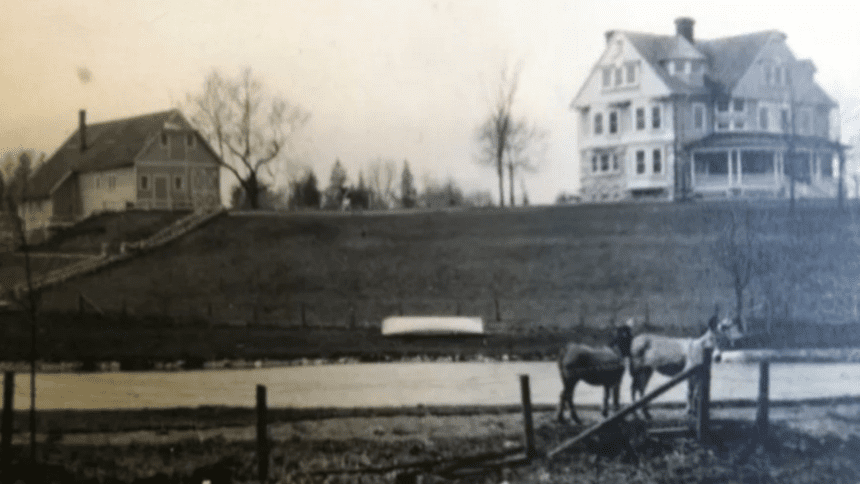Dear Friends,
“Negative space” is a term used in art to describe the space surrounding a subject–that essential and important “empty” space surrounding the positive space in a composition.I am thinking about that concept while standing with Sr. Ellen Murray in the impossibly crowded, narrow hallway of Sr. Helen David Brancato’s art studio. Ellen and I are there to preview Helen’s #BlackLivesMatter art exhibit, scheduled to be hosted at Cranaleith this September. Surrounded by the layers of Sr. Helen’s framed paintings, I listen to Helen’s quiet, soft voice as she describes the profound beauty and dignity of every person’s story depicted on each canvas:black women quilting, holding needles that appear as flashes of light; children joyfully skipping rope in the street.I am surrounded by these hundreds of paintings of black men and women, each face in dignified repose, awash in vibrant, rich colors of deepest burgundy, yellow and orange.The canvases are stacked two-deep, an artist’s lifetime dedicated to creating, to art, to painting, to community–each portrait more arresting than the next.A Haitian child standing in the shadows of a doorway, the side profile of a man with a complicated story and past.So many stories.I can’t follow them all; they swirl with the paintings hung on the wall, stacked on the floor.I nod as I listen; lost in the eddy.
In celebration of my induction in June, Sr. Ellen gifted me a print of Sr. Helen David’s painting “St. Francis of Assisi and the Wolf.”The wolf curls in the foreground, showing only his back to the viewer–his nose lifts to the face of Francis–the triangular shape of the wolf’s head echoing the shape of the saint’s face framed by the cowl of his robe.Because I didn’t know the context, Sr. Maria shared with me the story as told and re-told since the 13th century–of how the wolf had terrorized the village until St. Francis listens and discerns that the cause for the wolf’s violence is hunger.The townspeople forgive the wolf, promise to feed him every day; the wolf lives the remainder of his days in peace and harmony.
So many stories.Wolves and saints, fear and hunger, forgiveness and promises, poverty and dignity.
In a recent article in Psychology Today,Robyn Fivush notes that while the importance of “telling our story” has become a “rallying cry…[for]everyone from high school teachers to executive leaders,” she reminds us that “knowing how to listen to other’s stories is just as important as being able to tell your own…Learning how tell your story is a critical tool for individuals; listening to others builds community.”
In fact, there may be scientific evidence.
Uri Hasson, professor of psychology and neuroscience at Princeton University, and his research team have documented the ways that–as we hear a story unfold–our brain waves actually begin to synchronize with those of the storyteller.
Have you ever watched Sr. Mary when she is listening to someone talk?Her hands tuck up under her chin, she smiles broadly, she seems to become one with her single earpiece.You feel safe, somehow.Heard.
Thich Nhat Hahn described “compassionate listening” as that which happens when you quiet your mind, stay open, listen to what is beyond words, a way of listening not only to what is said–the foreground–but what is unsayable–the background.It’s a way of “holding open” a sacred space.
This Sunday, Cranaleith hosts a listening session titled: “If These Walls Could Talk.”It’s an opportunity to hear the stories about the history of Cranaleith as told through the memories of those who were here at its very beginning, including Srs. Mary and Maria. Please join us.Come to Cranaleith, this sacred, “in-between” space.
So many stories.I can’t wait to hear them all with you.
Best Wishes,
Dawn Hayward

